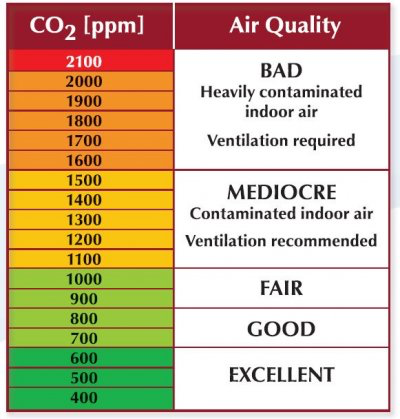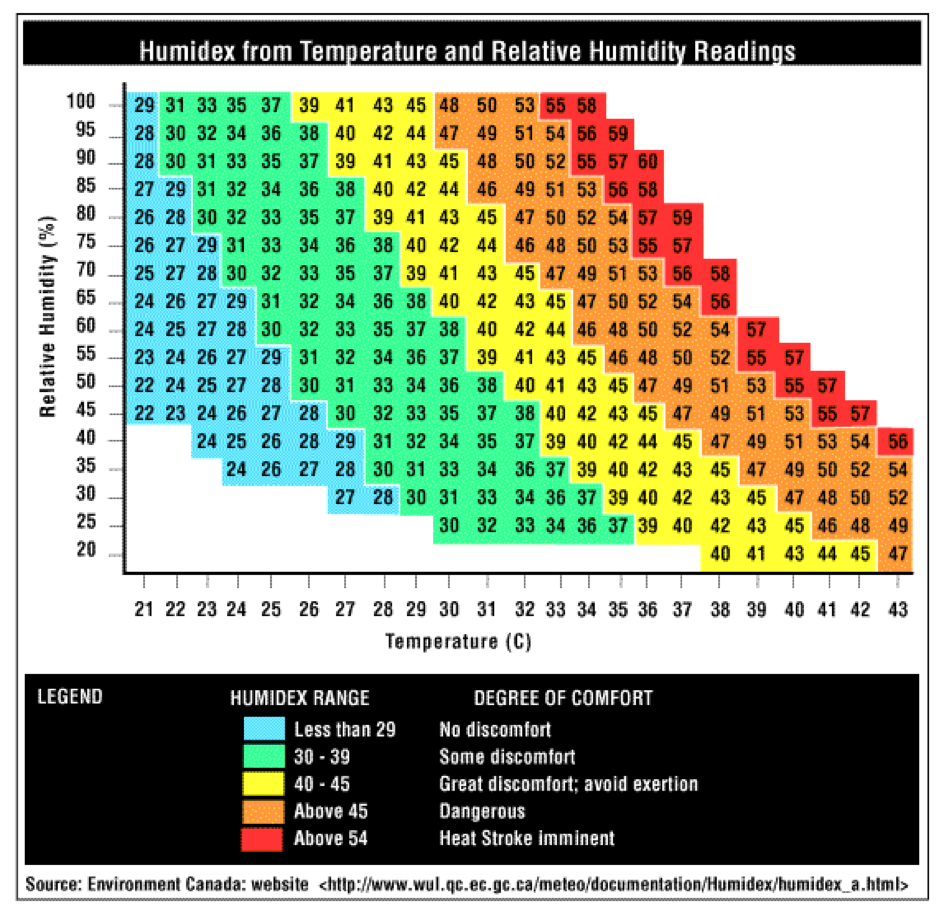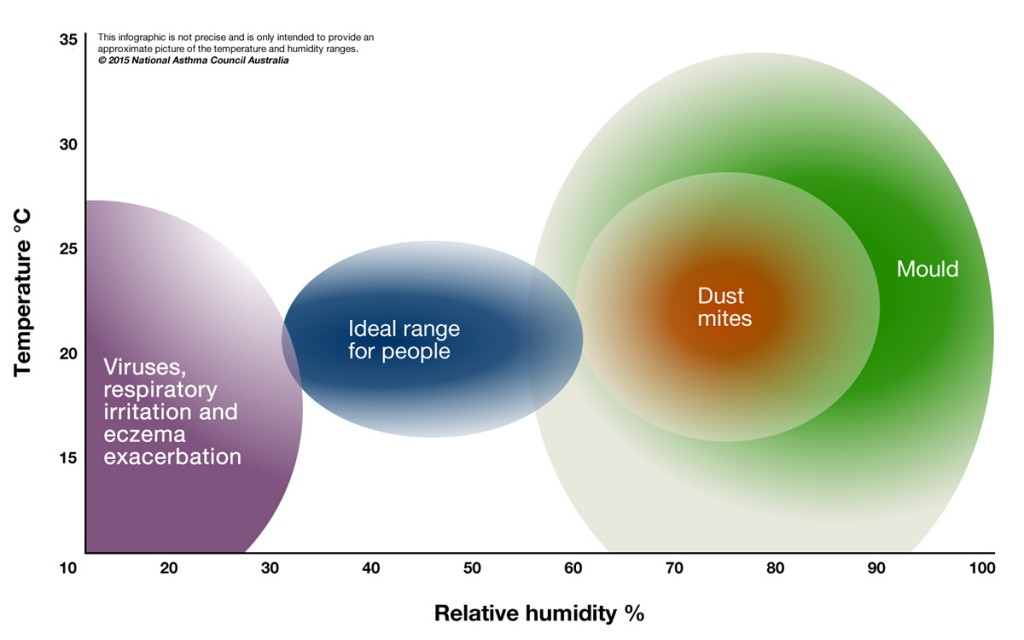Indoor CO2 Levels
Elevated indoor levels of CO2 have unfavourable effects on health. Because of poor ventilation many schools, offices, meeting rooms and bedrooms have relatively high levels of CO2, that can influence cognitive abilities.
Indoor air quality also has an impact on sleeping. Unventilated bedrooms often have high concentrations of carbon dioxide. The more people sleeping in one bedroom the higher the concentration is, and the level is rising during nighttime, when people are sleeping. Poor air quality can lead to unrestful sleep, that can lead to health issues. It can especially be dangerous for children.
When the air quality is in the mediocre region people feel drowsiness and we can her complaints about poor air, but when it is in the bad zone it is more serious. At that region people lose attention, feel sleepy and have headaches. On top of that increased heart rate and nausea can be symptoms also.
Humidex
Humidex is a temperature index that describes how the weather feels by taking the effect of both heat and humidity into consideration.
According to the Meteorological Service of Canada, when the humidex is between 30 and 39, weather causes "some discomfort", between 40 and 45 the discomfort feeling is getting more serious and it is recommended to avoid exertion. Above 45 it is getting more dangerous and when it gets higher it can lead to heat stroke.
Temperature - Humidity
Low level of humidity
Low level of humidity leads to dry air, that increases the possibility of catching viruses like flu, can aggravate eczema and can lead to dry skin.
Higher level of humidity
Higher level of humidity creates an ideal environment for dust mites and mold, that are triggers for allergy and asthma.
Dust mites like moderate temperatures and a humidity level that is above 70%. The can be found in bedding, flooring and furniture.
Mold grows in areas with longer periods of humidity. Poor ventilation can lead to mold growth, especially in bathrooms.






![CO2 + Temperature and Relative Humidity Sensor [SN-THC-02] CO2 + Temperature and Relative Humidity Sensor [SN-THC-02]](https://www.iqhome.org/image/cache/catalog/products/sensors/THC-247x260.png)